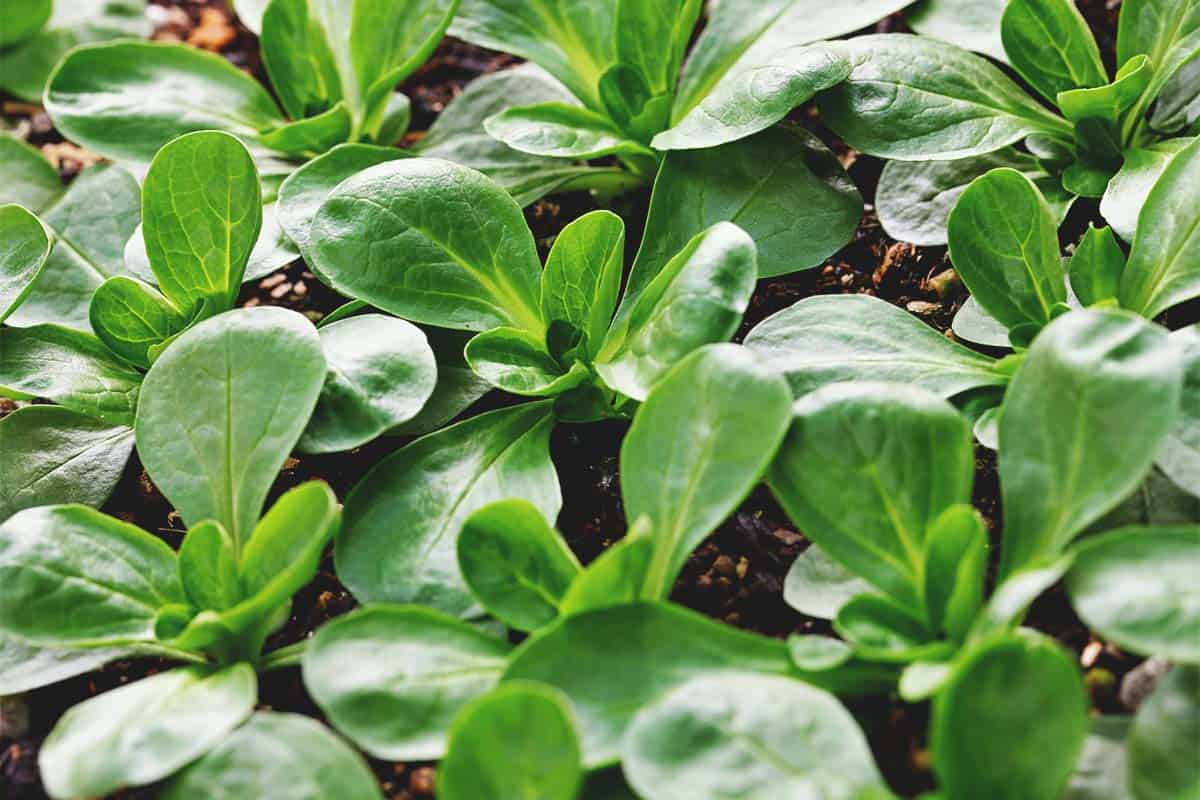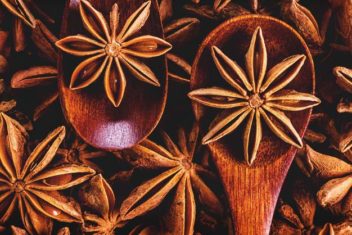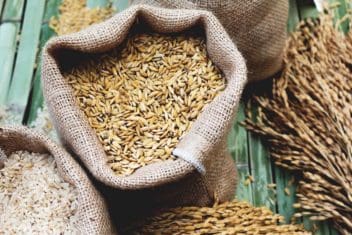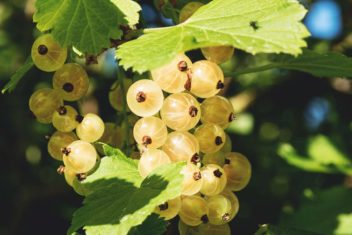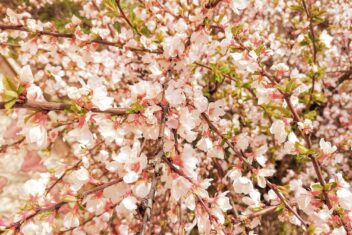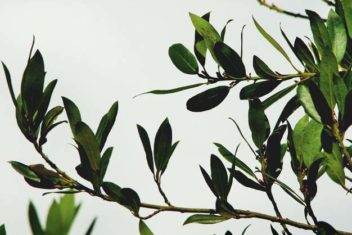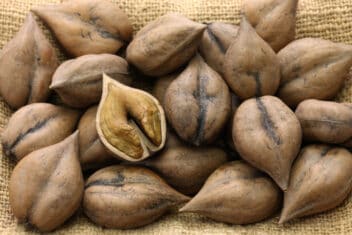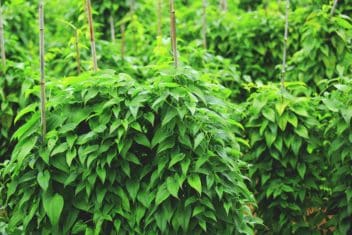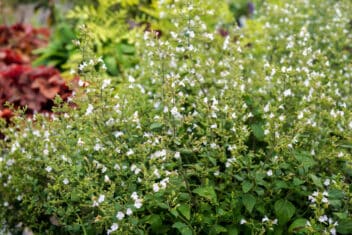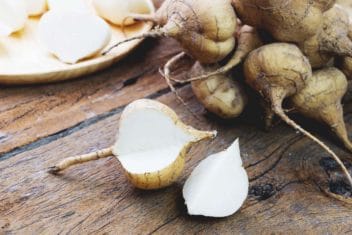Winter can suck for the gardener. You may have a few herbs on the window sill, but generally, there’s not much growing in the garden. Mache is one of the exceptions. This tasty veg can handle weather that other plants can’t.
I’m fascinated by plants that can survive the winter because it seems that humans (at least where I’m located) barely seem to get through it themselves. I feel a weird connection to winter-hardy plants because I adore winter. I thrive in the cold, like the unique plants harvestable throughout the months of December, January, and February. It fuels me. I love a warm cup of coffee and a cozy blanket, but I’m equally at ease outside when it’s 40 below.
I’m deeply interested in winter vegetables because I find it amazing that plant life can survive the deep freezes and wacky winter weather (freezing rain, hail, and blizzards). To eat from the snow seems like an incredible fairy tale. Luckily, there are plenty of edible plants capable of handling dips in temperature. Chief among them is mache.

What is Mache?
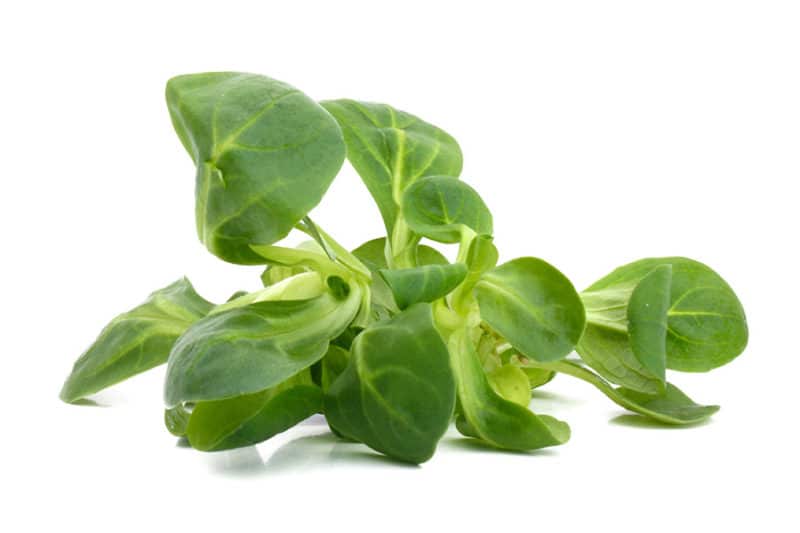
The tiny lettuce-like rosette is a French delicacy, but most North American gardeners have only recently started to get interested in the edible plant that looks like a weed.
Also called lamb’s lettuce and corn salad, mache is a tasty, leafy growth with a unique flavor profile. Tastier than regular lettuce, mache is nutty and robust. It’s also incredibly cold hardy. It barely needs protection except for in frigid climates, and even then, it’ll stay green well into the depths of winter as long as it’s covered.
It’s the top choice for those wanting to enjoy greens throughout the winter or in the early spring. You won’t usually find it sold in the grocery store because it’s quick to spoil and challenging to harvest mechanically compared to lettuce and other greens.
Mache Varieties
Mache is also known as lamb’s lettuce and corn salad. It may seem as if these are different varieties, but that’s not the case. They’re the same thing with a different label. Some seed producers have started to breed and sell unique types with special characteristics like thicker leaves, higher heat tolerance, and deeper green foliage, but they’re usually simply labeled as vit mache, mache, lamb’s lettuce, or corn salad. Mache is also often included in salad green seed mixes.
There are two main types of mache: large-seeded varieties and small-seeded varieties. Large seeded mache usually has pale foliage and isn’t as cold hardy as the small-seeded varietals, which have darker foliage and are extremely winter hardy.
Planting Mache
Grow mache in pots, long containers, or in regular garden beds. Many gardeners also have lots of success growing mache in window boxes.
Growing Zones
Mache grows in zones 2-10.
Sun Requirements
Plant mache in a spot with full sun. Mache also tolerates partial shade.
Soil Preferences
Choose a bed with fertile, loamy soil for planting mache Mache prefers a pH between 6.5 and 7.0. It can also handle light clay or sandy soil, just make sure it’s well-draining.
Starting Mache Seeds
Mache seeds are finicky. They’re slow to germinate, and you usually won’t have a 100% success rate with seeds from this plant, so don’t sow sparingly. Once mache has germinated, the plant grows a lot slower than other greens, so patience and proper timing are essential to get from seed to harvest.
You’re better off direct sowing, there’s not really a benefit to starting indoors unless the summer weather commonly extends into the fall where you live.
When to Start Seeds
Mache likes it cold! You’re probably used to growing plants like tomatoes and peppers that thrive in hot weather. Most of us garden during the warmer months of the year, after all. But mache dislike hot weather. It won’t grow well in the heat. It’ll bolt quicker than any other green and will taste awful if left exposed to hot weather. Seeds also won’t germinate if the soil is too warm.
Sow seeds in early spring or fall when the soil temps are 50°F.
When starting outdoors, I recommend sowing more than you think you’ll need because germination rates are unpredictable, and you hardly have control over the weather – if only gardeners could pick and choose the weather!
Spacing
Keep plants approximately 4 to 5 inches from one another. Sow seeds 1/4-inch deep.
Caring for Mache
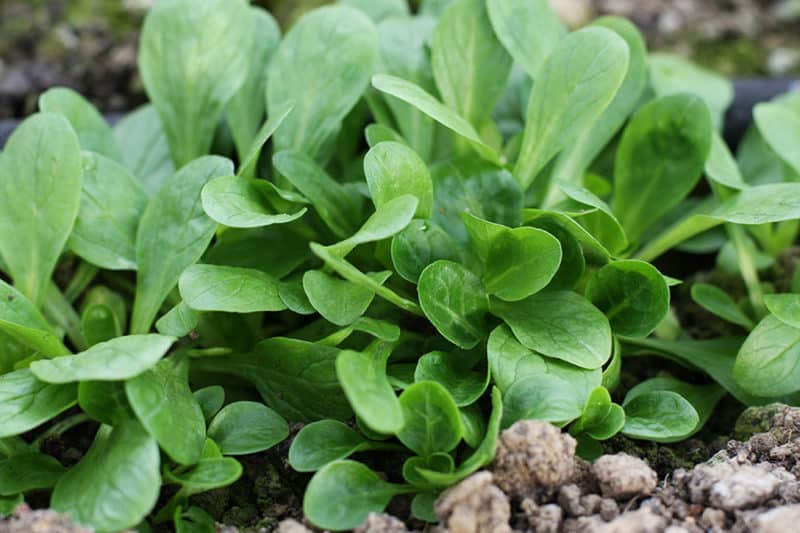
Growing mache doesn’t require a lot of effort or maintenance work, but here’s a breakdown of what you need to know to keep your plants alive.
Watering
You won’t need to water as often as you do with other greens since the colder weather leaves behind more moisture for your plants. If overwintering mache (in a cold frame or otherwise), you will, however, need to water even when it’s cold outside, though still infrequently.
Give at least an inch of water each week.
Fertilizing
Fertilizing isn’t necessary in most cases, but work in well-composted manure when planting.
Mulching
Mulching may be useful for extra protection when overwintering but not necessary for moisture retention.
Pruning
Pruning isn’t required, just harvest leaves as you need them.
Succession sowing
Mache is a slow grower, but it’s possible to stagger plantings slightly. Be sure to sow your last planting early enough to give your mache enough time to mature before the winter or summer heat sets in.
Leave mache in the garden and let it bolt and it will re-seed itself. Mache used to be considered a weed by many, so I recommend keeping it in a designated area of your garden where you won’t mind if it takes over a bit.
Problems with Mache
Cool-season growing comes with many advantages. You get fresh produce even when it’s cold outside! You also don’t have to contend with many pests, for the most part. You might encounter a few problems growing mache, but they’re infrequent compared to growing other tender greens and heat-loving plants. Here are a few issues to watch out for:
Problems
Poor germination: if it’s too hot, your mache seeds won’t sprout. Cool temperatures are required to germinate this type of seed.
Dead mache plants: Is it too cold? Even mache won’t survive long uncovered in severely cold weather. Guarantee success with a protective cold frame — just be sure to open and vent the unit when it’s super sunny outside to prevent overcooking your mache plants.
Pests
Snails and slugs: Snails and slugs like to feast on juicy mache leaves, so in the spring and early fall, it may be necessary to protect the small, burgeoning rosettes.
Aphids: Pretty much every plant is subject to attacks from aphids. Read our guide for dealing with them.
Flea beetles: This little pest chews shot holes in leaves and a severe infestation can stunt a plant’s growth. You can use yellow sticky traps, trap crops, and row covers to keep them away. If the infestation gets bad, you can use a pesticide.
Cabbage looper: Also known as inchworms, these little caterpillars can devour plants in no time at all. Pick them off when you see them, encourage birds in your garden, use pheromone traps and floating row covers. If things get out of control, use a spinosad-based spray.
Leaf miner: Leaf miners chew tunnels through the leaves of plants which, at best, is unsightly, but at worst, can damage plants and stunt growth.
Diseases
Alternaria leaf spot: This is a fungal disease that causes spotting that turns necrotic on leaves. Avoid overhead watering, keep plants well spaced, and use a fungicide to control.
Clubroot: Caused by a fungus that attacks roots, this disease causes plants to die off because it prevents them from absorbing water and nutrients. If your mache wilts during the day and perks up at night, you might want to check the roots to see if they appear swollen and misshapen. Keep your garden weeded, rotate your crops, sterilize your soil between crops. There is no cure.
Downy mildew: Steer clear of diseases powdery mildew by choosing disease-resistant mache varieties. Also, always try to water plants from below instead of soaking the leaves from above.
Companion Planting for Mache
You should be growing mache with companions that also tolerate cooler weather like:
- Cabbage
- Carrots
- Turnips
- Leeks
- Viola
Don’t plant mache with onions.
Harvesting Mache
Harvest when leaves are about 3 inches long, usually 2-3 months after planting.
Mache should be used immediately after harvesting since it goes bad quickly. Like other types of greens, harvest when the size is to your liking. You can harvest leaves individually, but the slow-growing plant is unlikely to produce more leaves before the end of the winter season. It’s best to cut the plant off at the base and harvest entire rosettes.
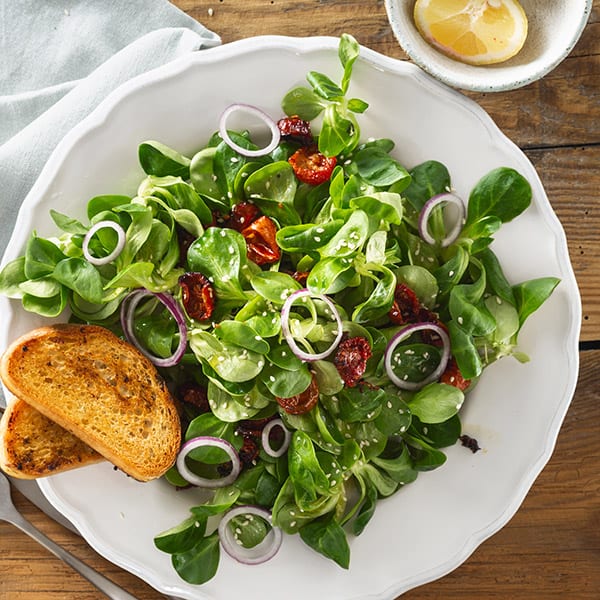
Use mache as a salad base instead of lettuce or use it as a green garnish to otherwise drab winter dishes. When pairing mache with dressings for a salad, opt for light dressings to avoid overpowering the flavor of the leaves.
Some people also sauté mache leaves as a substitute for spinach, but I don’t recommend doing this. If you want spinach, cook spinach. Cooking mache is a total waste. The slow-growing plants should be picked and enjoyed fresh with minimal interference. Cooking the leaves dulls the flavor significantly.
Of course, its winter handling abilities aren’t the only benefit of growing (and eating) mache. Lamb’s lettuce is full of nutritious vitamins and minerals, including more than your daily recommended requirements for Vitamin A and plenty of other goodies like iron and vitamin B6.
It’s also low calorie like other greens, which I know is of interest to some, though I don’t like to think about the calorie count of anything, let alone my garden produce. All you need to know? It’s a good-for-you green.
